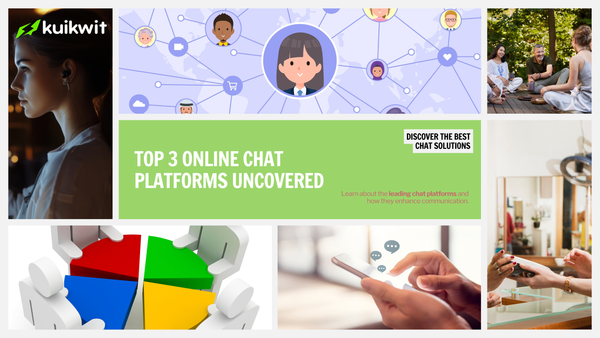Positive Positioning in Customer Service | Build Loyal Customers
Discover how positive positioning in customer service builds trust, improves communication, and turns customer interactions into lasting brand loyalty.

In today’s competitive business landscape, the way a company positions itself in the minds of customers can define its success. One of the most effective ways to build and maintain trust is through consistently positive customer service. This strategy goes beyond simply solving problems; it’s about shaping customer perceptions through optimism, empathy, and consistency. When done right, positive positioning not only enhances brand image but also boosts customer loyalty and retention.
What Is Positive Positioning in Customer Service?
Positive positioning in customer service means communicating with customers in a way that reinforces your brand’s reliability, care, and professionalism, even in challenging situations. It’s the art of turning potential negatives into opportunities for connection.
Instead of focusing on what can’t be done, positive positioning emphasizes what can be done. It’s about using language, tone, and actions that make customers feel valued and respected.
For example:
- Instead of saying, “I can’t process your request today,” a customer-focused agent might say, “I’ll make sure your request is completed first thing tomorrow morning.”
This subtle shift in tone changes the entire experience. The customer still hears the same message, but in a way that builds trust instead of frustration.
Why Positive Positioning Matters More Than Ever
In a digital age where customers have endless choices and instant access to competitors, every interaction counts. Here’s why positive positioning has become essential:
1. Creates a Lasting Impression
Customers remember how you made them feel. A single positive interaction can outweigh several neutral ones and even repair a negative experience.
2. Builds Emotional Connections
People connect more deeply with brands that display empathy and understanding. Positive language creates emotional bonds that foster long-term loyalty.
3. Encourages Repeat Business
Customers are far more likely to return when they feel appreciated. Positive positioning reinforces that appreciation at every touchpoint.
4. Differentiates Your Brand
In markets crowded with similar products or services, tone and attitude can be your biggest differentiators.
Key Elements of Positive Positioning in Customer Service
1. Empathetic Communication
Empathy is at the heart of every successful customer interaction. Positive positioning starts with truly understanding the customer’s emotions and needs. Use phrases like:
- “I understand how that could be frustrating.”
- “Let’s find a solution that works best for you.”
This approach validates the customer’s feelings while keeping the conversation focused on problem-solving.
2. Proactive Support
Positive positioning isn’t just reactive; it’s proactive. Instead of waiting for customers to face problems, anticipate their needs. Send reminders, offer support tips, or follow up after a service issue is resolved.
Proactive communication positions your brand as attentive and caring — two qualities that customers value deeply.
3. Language That Builds Trust
Words shape perception. A simple change in phrasing can transform a customer’s experience.
Compare these two examples:
“We don’t handle that issue.”
“Let me connect you with the right team that can handle that for you.”
The first statement creates distance; the second fosters confidence. Positive positioning always keeps the focus on solutions rather than limitations.
4. Consistency Across Channels
A consistent tone across chat, email, phone, and social media strengthens your brand identity. Customers should feel the same level of warmth and professionalism no matter how they contact you.
This is where platforms like Kuikwit (a unified customer messaging hub) can help. By managing all communications in one place, your team can maintain consistent positive positioning without missing context.
5. Active Listening
Positive positioning also depends on how well you listen. Active listening means giving customers your full attention, repeating key concerns to confirm understanding, and responding thoughtfully.
When customers feel heard, they are more receptive to your solutions. This builds trust and reduces frustration during support interactions.
6. Empowered Employees
Your customer service team represents your brand’s voice. Empowering them with the right tools, training, and decision-making authority enables faster, more confident resolutions.
When agents feel trusted and capable, they naturally convey positivity — which customers can sense immediately.
Examples of Positive Positioning in Real Scenarios
Let’s see how positive positioning transforms typical customer interactions:
Scenario 1: Shipping Delay
- Negative Response: “We’re running behind. Your package won’t arrive today.”
- Positive Positioning: “Your order is on its way and will arrive tomorrow morning. I’ll personally update you once it’s out for delivery.”
Scenario 2: Out-of-Stock Product
- Negative Response: “That item is out of stock.”
- Positive Positioning: “That item is temporarily unavailable, but I can notify you the moment it’s restocked or suggest a similar alternative right now.”
Scenario 3: Billing Error
- Negative Response: “You’ll need to contact another department for that.”
- Positive Positioning: “Let me connect you with our billing team right now so they can assist you quickly.”
In each example, the second version uses empathy, ownership, and reassurance, three foundations of positive positioning.
The Psychology Behind Positive Positioning
Positive positioning works because it aligns with basic human psychology. Customers respond better to encouragement, reassurance, and clarity. When interactions feel respectful and solution-oriented, customers are less defensive and more open to collaboration.
Moreover, the brain processes positive words faster than negative ones. This means optimistic communication not only feels better but is also easier to understand, reducing confusion and frustration in customer service settings.
Training Teams for Positive Positioning
Creating a culture of positivity requires consistent effort and training. Here’s how companies can help their teams master this skill:
1. Workshops and Role-Plays – Simulate real-world scenarios to teach agents how to reframe negative language into positive alternatives.
2. Customer-Centric KPIs – Instead of focusing only on speed, reward teams for empathy, resolution quality, and satisfaction scores.
3. Feedback Loops – Encourage agents to share successful interactions with peers. Learning from real examples reinforces positive habits.
4. Use Technology Wisely – Implement AI-assisted tools that suggest tone improvements or message templates aligned with positive positioning principles.
When your team internalizes these behaviors, they naturally become ambassadors of your brand’s positivity.
How Positive Positioning Boosts Brand Loyalty
Every customer interaction is an opportunity to shape perception. Brands that practice positive positioning in customer service consistently earn higher loyalty and stronger advocacy.
Customers don’t just remember the product, they remember the experience. When your service feels human, optimistic, and respectful, customers become emotionally invested in your brand.
Over time, this leads to:
- Higher customer satisfaction (CSAT) scores
- Improved online reviews
- Increased referrals and repeat purchases
- Lower churn rates
In other words, positivity isn’t just a communication strategy, it’s a business growth strategy.
Conclusion:
Positive positioning in customer service is about more than just being polite. It’s a deliberate effort to shape how customers perceive your brand at every touchpoint. By focusing on empathy, proactive communication, consistent tone, and empowered teams, you transform routine service interactions into memorable experiences.
In a marketplace where technology and competition are constantly evolving, the one thing that never loses value is human connection. And positive positioning is the bridge that keeps that connection strong.
Remember: Every “no” can become a “not yet,” every complaint a chance to impress, and every conversation an opportunity to build trust.
That’s the power of positive positioning, turning service into loyalty and customers into advocates.




